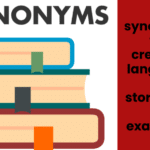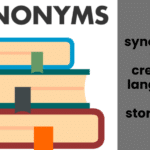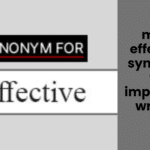Cloud seeding is a weather modification technique used to enhance precipitation, mitigate drought conditions, and suppress hail formation. This process involves introducing certain chemicals into clouds to stimulate the formation of raindrops or ice crystals, thus inducing precipitation. Various types of chemicals are used in cloud seeding, depending on the climatic conditions, the type of clouds, and the desired outcome. Below, we explore the primary chemicals used in cloud seeding, their mechanisms, and their environmental impacts.
1. Silver Iodide (AgI)
Silver iodide is one of the most widely used chemicals in cloud seeding due to its ability to act as an ice nucleating agent. It has a crystalline structure similar to that of ice, which enables it to promote the formation of ice crystals within supercooled clouds (clouds with liquid water droplets below freezing temperature).
Mechanism:
- When silver iodide is dispersed into clouds, it provides a surface for supercooled water droplets to freeze.
- These frozen droplets grow in size by attracting more water, eventually becoming heavy enough to fall as snow or rain.
- It is particularly effective in cold clouds where temperatures are below -5°C.
Applications:
- Used primarily in winter cloud seeding programs to increase snowfall.
- Employed in hail suppression efforts to reduce the size of hailstones.
- Enhances precipitation in regions experiencing drought.
Environmental Concerns:
- Silver iodide is used in very low concentrations, and studies suggest minimal environmental impact.
- Prolonged and extensive use is being studied for potential long-term ecological consequences.
2. Sodium Chloride (NaCl) and Other Hygroscopic Salts
Sodium chloride (common table salt) and other salts such as potassium chloride (KCl) and calcium chloride (CaCl2) are used in warm-cloud seeding techniques. These compounds act as cloud condensation nuclei (CCN), facilitating the growth of water droplets.
Mechanism:
- When salt particles are introduced into clouds, they attract moisture and form larger water droplets.
- These droplets combine with others to form larger raindrops, which eventually fall as precipitation.
- This method works best in clouds that already contain some moisture but lack sufficiently large droplets to trigger rainfall naturally.
Applications:
- Used in tropical and coastal regions where warm clouds predominate.
- Effective in enhancing rainfall in agricultural regions facing water shortages.
- Helps in reducing smog and improving air quality by facilitating rainfall.
Environmental Concerns:
- Sodium chloride and other salts can have potential ecological effects if introduced in high concentrations.
- Excessive use could impact soil salinity and freshwater ecosystems.
3. Calcium Chloride (CaCl2)
Calcium chloride is another hygroscopic compound used for warm-cloud seeding. It is particularly effective in maritime and humid regions where cloud moisture is abundant but precipitation formation is inefficient.
Mechanism:
- Similar to sodium chloride, calcium chloride absorbs moisture, leading to the growth of water droplets.
- It enhances coalescence (the process by which smaller droplets merge into larger ones), which promotes rainfall.
Applications:
- Used in warm-cloud seeding programs in coastal and arid regions.
- Sometimes used in combination with sodium chloride for improved efficiency.
Environmental Concerns:
- Potential risks include increased soil salinity and effects on freshwater reservoirs.
- Careful monitoring is required to prevent adverse environmental impacts.
4. Dry Ice (Solid Carbon Dioxide, CO2)
Dry ice, or solid carbon dioxide, is a chemical used primarily for ice-phase cloud seeding. It is effective in cold cloud environments where the goal is to initiate the formation of ice crystals.
Mechanism:
- When dry ice is dispersed into a supercooled cloud, it rapidly cools the surrounding air.
- This cooling effect causes supercooled water droplets to freeze instantly, leading to the formation of ice crystals.
- These ice crystals grow and eventually fall as snow or rain.
Applications:
- Used primarily in wintertime cloud seeding operations.
- Effective in increasing snowfall in mountainous regions to replenish water supplies.
- Sometimes used in combination with silver iodide for enhanced results.
Environmental Concerns:
- Dry ice itself does not pose significant environmental risks, as carbon dioxide is already a natural component of the atmosphere.
- However, excessive CO2 emissions from large-scale cloud seeding operations could contribute slightly to global carbon levels.
5. Urea (CO(NH2)2)
Urea, a nitrogen-rich compound, is sometimes used in warm-cloud seeding to enhance the formation of raindrops. It acts as a cloud condensation nucleus similar to hygroscopic salts.
Mechanism:
- Urea particles attract moisture, leading to the growth of cloud droplets.
- It facilitates coalescence, allowing smaller droplets to merge into larger ones that can fall as precipitation.
Applications:
- Used in agricultural regions to improve rainfall patterns.
- Sometimes included in cloud seeding projects aimed at increasing reservoir levels.
Environmental Concerns:
- Excessive use could contribute to nutrient runoff, leading to algal blooms in water bodies.
- Potential impact on soil nitrogen levels, necessitating careful regulation.
6. Potassium Iodide (KI)
Potassium iodide is chemically similar to silver iodide and is sometimes used as an alternative ice-nucleating agent.
Mechanism:
- Functions in the same way as silver iodide by providing ice nuclei in supercooled clouds.
- Encourages the growth of ice crystals that eventually fall as snow or rain.
Applications:
- Used in wintertime cloud seeding programs.
- Sometimes combined with other seeding agents for improved results.
Environmental Concerns:
- Generally considered safe when used in appropriate amounts.
- Prolonged exposure in ecosystems requires further study.
Conclusion
Cloud seeding is a valuable weather modification technique that relies on various chemicals to enhance precipitation and manage climatic conditions. While silver iodide remains the most commonly used chemical for cold-cloud seeding, hygroscopic salts like sodium chloride and calcium chloride are essential for warm-cloud seeding. Other compounds, such as dry ice, urea, and potassium iodide, provide alternative methods for inducing precipitation. Despite its benefits, cloud seeding must be conducted responsibly to minimize environmental risks. Future research will continue to refine these techniques and explore new, more sustainable chemical alternatives for weather modification.







